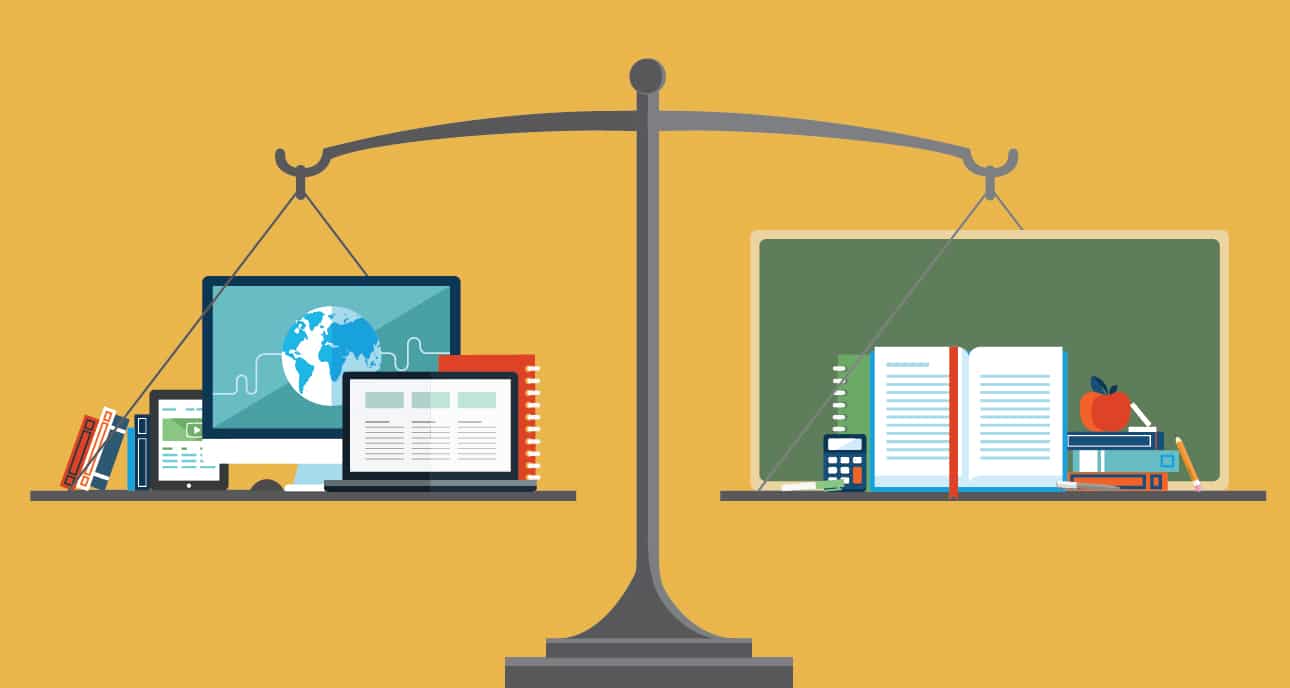
The debate between online learning versus traditional education continues to take the centre stage each passing year. During the pandemic online teaching emerged as the only relevant option to impart education. Instantaneously all the learning activities had to take place online, including employees in many countries switched to work from home. But is it a viable substitute for traditional learning? Let’s take a look at various aspects of Online Vs Traditional learning and compare.
Online Learning
Online Learning also known as electronic learning takes place over the internet, means learning with a Digital Platform and not in a traditional classroom. It’s interchangeable with the term “E-learning” or “Distance Learning” learning that takes place across distance, without going anywhere. Typically, LMS stores the training content, which is accessible anywhere and anytime. Online Learning gives the opportunity to learn from the best professionals or teachers of a particular subject or stream. Online learning offers ease and flexibility to both students and teachers.
Traditional Learning
Traditional classroom learning has been in existence since ancient times. Traditional learning takes place in a classroom setting. It requires a physical infrastructure setup with students being instructed by a teacher. Teacher moderates and regulates the flow of information and knowledge, students must be physically present if they want to get education, if not the student may miss the topic taught by the teacher in that class/lecture. Traditional classroom learning is more suitable for young children, teenagers, and young adolescents. Since it helps in imparting discipline, following a regular schedule, and interacting with students of their own age.
Comparing online Vs. traditional learning
Features
Infrastructure Mode of education Flexibility
Learning style and pace
Source of information and knowledge Interaction
Online Learning
Minimum dependency It happens online
Absolute (anytime, anyplace)
Supports an independent learning or group learning virtually and at a flexible pace
Primary source of information is E- content resources
Limited interaction Cost-effective
Traditional Learning
Maximum dependency It happens offline
Minimum (restrained to a schedule and place)
Group learning through face-to-face direct interaction at an imposed pace
Primary source of information is the teacher or trainer
Extensive interaction between teachers and students
Comparatively expensive
Costs
Online and traditional learning way forward
It can’t be said that online learning is more effective than traditional education, or vice versa. In the debate of effectiveness no one wins. Since effectiveness depends on the learning topic and how it has been imparted. Mounting evidence suggests that learners generally learn as much as online as they do in traditional training.
The online learning process has the potential to get rid of the traditional education system, by getting unlimited access to knowledge across the globe without any infrastructural barrier. Online doubt resolution platforms enable students to connect with an expert to resolve their doubts instantly along with access to a rich repository of resources. One cannot simply ignore the benefits of online education, e-learning is a full-fledged alternative to traditional learning.
The traditional way of education provides practical knowledge of various subjects in the form of laboratories and field work. Traditional learning encourages individuals to be more social and proactive; since the whole learning process is in a controlled environment supervised by a teacher. While traditional training is fighting back by trying to adopt newer means of retaining learners’ interest. Mainly by adopting “Hybrid learning” a more integrated approach involving online and traditional learning processes, there are two sides of a coin going forward, choosing one over the other is too rigid.